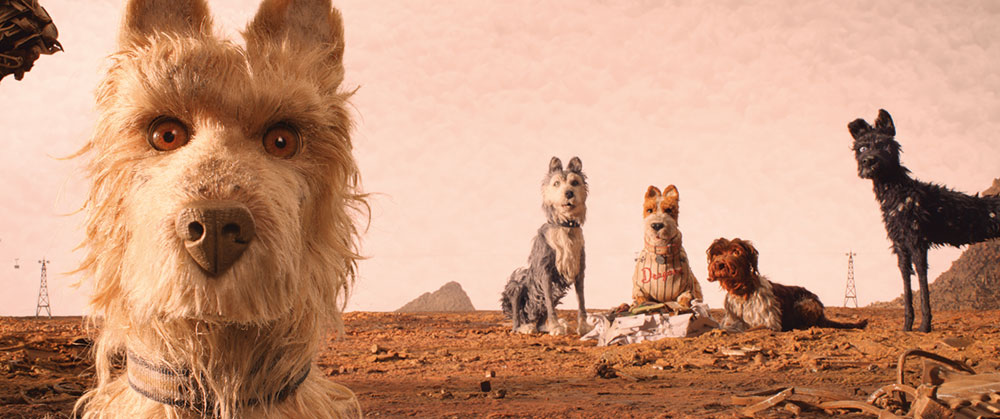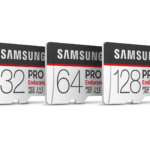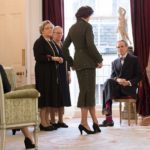
Dogged
Posted on May 9, 2018 by Julian Mitchell

There is a good reason stop-motion movies aren’t the norm. We talked with Isle Of Dogs DOP Tristan Oliver about surviving the experience
Words – Phil Rhodes
Director of Photography Tristan Oliver had, he says, “a fairly unconventional route into the industry. I was very much a performer in my early adult life. I wanted to be an actor and all that stuff. I had a small amount of success doing that, but it was whilst I was shooting a movie called Another Country that I became very, very interested in what the camera crew were doing.” Pursuing camera at film school, Oliver found himself amongst “a lucky group of people. We gelled as a group and one of the movies I shot as a graduation piece did very well on the student film circuit.” Initially, Oliver was keen to move up in the conventional way, but “very quickly proved myself to be a wholly inadequate focus puller – which was a good thing, I think. If you are a good focus puller, people won’t let you do anything else as you’re too valuable!”
In 1988, Oliver made first contact with Aardman Animations, who would later produce the Wallace and Gromit TV and feature series as well as Chicken Run, Shaun the Sheep Movie, Early Man and many other stop-motion greats. “One sort of fateful day I rang Aardman,” he says, “who at that time were three blokes in a garage, because I knew someone there and I needed some lights for a pop promo. They said ‘what are you doing next week?’”
 “The Canon 1Dx DSLR is by far the best camera for stop motion”.
“The Canon 1Dx DSLR is by far the best camera for stop motion”.
“There was the kid in the corner of the room who was finishing off his graduation film,” Oliver recalls. “That was Nick [Park], who was making Wallace and Gromit: A Grand Day Out. But they were mainly shooting commercials.” Oliver is keen to cite the influence of Aardman co-founder David Sproxton, who was “driving towards a cinematic approach to shooting stop-motion. All it was at that point was children’s TV stuff: flat, toplit, soft, no shadows, knock it out as fast as you can. He was frustrated with that… the camera department was trying not to make any concessions to the medium of animation.”
Since the 1980s and Aardman, Oliver had up to now directed photography on four stop-motion feature films: Chicken Run, The Curse of the Were-Rabbit, Fantastic Mr. Fox, and ParaNorman. His fifth is Wes Anderson’s Isle of Dogs, produced by Anderson’s American Empirical Pictures and Indian Paintbrush, which had also been involved in the Anderson-directed Fantastic Mr. Fox, The Grand Budapest Hotel, The Darjeeling Limited and Moonrise Kingdom. Pre-production on Isle of Dogs began in October 2015, with camera tests about six months before principal photography. “Everything is built,” Oliver says. “It’s not a case of going to John Lewis and buying your crockery. There’s a lot of issues in paint, textures, will the materials they’re using for the faces take light properly… I’m usually involved pretty early.”
 ” 600 C-stands were part of the gear purchase order”.
” 600 C-stands were part of the gear purchase order”.
The film’s voice cast is an impressive ensemble including Bryan Cranston, Edward Norton, Liev Schreiber, Bill Murray, Jeff Goldblum, Scarlett Johansson and many others. This group spent only a few days recording the production dialogue, which was then edited into essentially a radio play to which the animators would work. “We can’t animate to scratch because the timing is wrong,” says Oliver, emphasising the importance of planning. “You go into a stop-motion project knowing every frame you are going to shoot. It is utterly pointless shooting coverage or making it up on the fly.”
“The 1dx cameras were each tethered to workstations running dragonframe”
Oliver refers frequently to animators using terminology more often associated with actors. “The animator is very much stepping out on the stage to give a performance. The nuances of performance might vary between them. There’s a high concentration level required and having anyone else in that space can actually be distracting. If you have a crowd scene, you might have an assistant animator tweaking the background. If it’s acting, it’s one guy in a room for as long as it takes.” The time required, he says, is hugely variable. “You could be doing a single close-up on a character frowning and it might take forever because it has to look absolutely right to whatever emotion is going through the character’s head.”
Canon 1Dx

Isle of Dogs was shot on digital stills cameras, in common with many other recent stop-motion productions, although Oliver emphasises that the recently-developed Canon 1Dx DSLR is much better for stop-motion work than pre-existing options. “Ever since we stopped using 35mm we’ve picked cameras that aren’t very good because… no still camera manufacturer is making a camera especially to shoot stop frame on.
We ask of it more than it’s ever designed to do. We force it into providing a live image off the chip pretty much all the time. That takes it toll on chips – they get very hot, you get density fluctuations, you get fluttering in the shadows.”
Canon’s 5D family had previously been popular for stop-motion production but just such a tendency to overheat when used continuously in live-view mode, often to the point where magenta flickering became visible in the shadows. During the production of ParaNorman, production company Laika had been forced to retain what Oliver calls “a gang of people in VFX whose job it is to sort out the overnight fluctuations and flicker. This time we didn’t have to do that. We spent more money on the cameras but saved that money on the fixes. That was the same camera, the 1Dx, that Aardman used to shoot Early Man on – we both did a full testing programme of cameras out there and both came to the same conclusion without knowing what
the other had chosen.”

Camera and lighting equipment for Isle of Dogs was purchased outright, given that it would be required continuously for two years. “I bought 600 C-stands,” Oliver recalls. “They all get sold at the end – someone gets a fab deal… and it’s all immaculate because it’s never been on a truck in its life!” He describes the lighting package as conventional: “The whole bucket of fresnels, 10Ks, 5Ks, 2Ks, 300s, mainly ARRI. Some Strand in there, cyc lights, dedolights.” The Altman Micro Ellipse, a miniature profile, was widely used: “We’ll buy a couple of hundred of those for a job.” Miniature practical lighting, Oliver notes, is something that’s changed in the last few years. “Whereas we used to use mini incandescents, we use a lot more LEDs because they’re colour true and they hold their colour while dimmed. They’re very useful for eyelights… they have so little dimension.”
The use of large 10K and 12K fresnels on miniature sets might seem surprising, especially given the option to use long exposures to maintain the required depth of field. The reality, though, is that a convincing exterior light can require upscale resources. “Although a 2K would cover the area, it wouldn’t look like daylight,” Oliver feels. “A big old bugeye 10K keeps the shadows together. It’s a natural looking light because the source is very big… you get something that looks like there’s a bit of atmos haze in there. Our exteriors are super simple, they’re one big source, usually catching that on polyboard, maybe a butterfly over the top with some fill in it so it looks like natural daylight.”
Any stop-motion scene requiring a camera move must use motion control and, as Oliver says, “the purchase of motion control rigs is a very expensive thing, so I went to a guy called Justin Pentecost. Between us, we designed a set of modular components – tracker beds, pan and tilt heads, risers, various sizes and lengths which could be bolted together… which would get me more or less any move I wanted.” In conjunction with this custom-made hardware, the production used Mantis motion control software, collaborating with its developer in order to improve and expand its capabilities.
Nikon Prime lenses
Isle of Dogs was shot on Nikon stills prime lenses, which were the only practical way to supply the production’s 50 simultaneous shooting stages. It also fulfilled the need for a lens which would not suffer the problems of modern electronic lenses intended for stills use with autofocus. “We want full manual control over the lens,” says Oliver. “We don’t want the camera trying to talk to the lens… [Nikon lenses] are a lot more stable for focus pulling because they’re not full of little motors.” Lenses were mainly obtained through Grays of Westminster, who Oliver is quick to credit for their excellent service. “I give him a list of 150 lenses, he says ‘I can get 75% of this now, the rest in two weeks.’ Who wouldn’t take that level of service?”

The 1Dx cameras were each tethered to workstations running DragonFrame, a piece of software specifically designed for stop-motion work. As well as managing the raw frames shot by each camera, DragonFrame provides replay of frames shot to date as well as frame-by-frame control of lighting cues and camera motion, plus a guide to lip sync for any dialogue in the scene. “The camera goes into that,” continues Oliver. “When a frame is taken, it captures a raw and then it makes from that raw a JPEG with a LUT. That LUT has to work through our entire pipeline. It has to work on the studio floor where we use Eizo calibrated monitors, it has to work in our projection theatre, in our VFX environment and it gives us a pretty good first look when we take the material into our grade.”
Control of the colour pipeline, Oliver feels, is crucial. “We know what we’re getting all the way down the line. We don’t have that horrifying experience of getting to the DI and realising you don’t have the range you thought… if you’re shooting a set that’s been split in two so you’re shooting one way on one set and one way on another, you don’t want the two halves of that set looking different. People know what they’re getting.”
“The day starts with rushes,” Oliver says. “We’ve got an immediate view of what we’ve done. We sit in the viewing theatre and watch the day’s work projected. Heads of department sit there and there is a normal rushes viewing process.” On any given morning, anywhere between ten and 30 of the production’s 50 working sets may need to be reset to shoot different scenes, a process involving sets, lighting, and motion control. “I can’t physically light 50 sets,” Oliver admits, “so I will typically take a dozen to 15 sets, usually the best stuff, of course.”
“I have two or three other guys who light for me and I have to make sure that what they’re doing fits in with the movie.” Oliver describes lighting cameraman James Lewis as a key collaborator: “He can handle the same size workload, he’s great. And then other people who are good, we give them delicate careful stuff to do and they can run six to eight units.” Beyond direct involvement, Oliver will also spend time liaising with gaffer Toby Farrar and his team as well as the art department, who must create sets with appropriate breakaway sections to allow them to be shot effectively.
“It entirely takes over your life,” Oliver says simply. “All you really have is your weekends, so if you work a Saturday it’s wretched. You can work Saturdays if it’s a short job, but [not] if you’re on a job that consumes your life for two years. I don’t take holiday, I don’t leave the floor unless it’s a bank holiday or Christmas. I try to eat sensibly, take enough exercise, get enough sleep. Even a single night of bad sleep can completely screw you up.” At the time of writing, Oliver was in Berlin for the premiere of Isle of Dogs and, perhaps unsurprisingly, had no plans to dive immediately back into further stop-motion work. “What I really want to do now… is to have a break and wallpaper my house. I’ll be going back into commercials and kicking back for a bit.”








